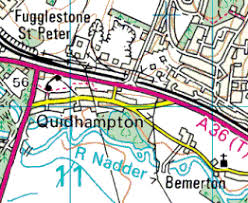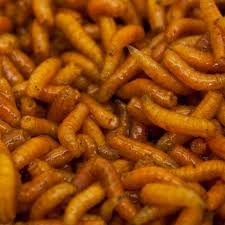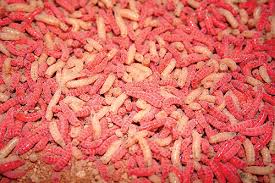 River Nadder
River Nadder
Fishing the Salisbury Rivers
Both the two
main rivers that flow through Salisbury, the River Avon and the River Nadder
were less than a mile from my home, so I used to fish them often. Over the
years I and my fishing friends got to know them like the back of our hands. We
knew just about every swim and what each one was likely to produce in pleasure
and match fishing conditions.
Because of
this we were fairly confident that we could produce the goods given a
reasonable swim. Each swim could be different according to the weather and state
of the river. Both the rivers tended to fish the best after fining down. When
they had a greenish blue tinge to them with a little tinge of colour to them
they would be really good and a real pleasure to fish.
The Nadder
could come up fairly quick and colour up after a little rain.
It would
fine down within a couple of days and that would be the right time to fish it.
The Avon was much slower to rise and colour up but could take up to a week to
fine down and drop in depth. Both rivers tended to fish their best in the
winter months after the first few frosts had killed off some of the weed and
the high flood type rains had flushed away this weed and all the dead leaves
that had fallen from the bank side trees.
The depths
could be up to around six feet in some swims and opposite the Fire Station
there was plenty of depth for the local kids to swim in the river. These depths
were to change over the next ten years and not for the better I am afraid. Both
rivers were capable of yielding match weights close to the 20lb mark.
The Avon
tended to produce some big grayling 

up to about 2lb and also some good dace
around the pound mark. As the Avon was primarily a mixed fishery you would
often catch some big native brown trout but they did not count in matches and
had to be returned immediately after capture. There were, however, some
specimen roach to be had and they would weigh around the 2lb plus mark. A few
of these turned up every now and again.
The Nadder
tended to yield plenty of good dace, a lot of good grayling and some nice chub
up to the 4lb mark. Again, you could also pick up the odd 2lb plus roach, but
they mainly fell to specimen hunters fishing the deeper water down towards the
Old Mill. There were some huge shoals of specimen dace below the Mill Pools
alongside the West Harnham Cricket Pitch. See below. Yours truly bagging the Dace
Both the
rivers could be hard to fish when the water was low and gin clear, but good
anglers could still get reasonable bags of fish by long trotting providing
there were not too many anglers fishing there at the time. In those types of
conditions we always tried to give each match angler about 30 yards of trotting
distance and this improved the overall match weights.
On these
occasions, if you wanted to win money on the Match Pools you had to be capable
of producing the odd couple of bonus fish when swims were dying. What normally
happened was the clear water conditions made catching, playing and landing fish
without putting the shoal down and seeing them disappear out of your swim a bit
of a nightmare.
Once hooked,
you had to play the fish slowly upstream to get it away from the shoal without
spooking them. Any crashing on the surface would be a bit of a disaster so you
had to keep the rod down close to the surface to keep the fish hugging the
bottom until you were ready for landing it.
Small, size 20 hooks were the order of the day
and it was easy for the fish, especially grayling, to wriggle or spin off. As
you can imagine it was no easy task to keep the fish in your swim. Continuous loose feeding, even when playing a
fish was crucial to keeping the shoal calm as they were easily spooked.
To get the
odd bonus fish which made the difference between winning and being an also ran,
my two friends John Stephonson, Brian Duckett and I had to come up with new methods and baits
which would give us the edge on the other match anglers. We pooled our
knowledge and experiences to help each other and agreed to share any winnings
between the 3 of us. I would like to think that my input lead us to do quite
well and we managed to frame on most river matches.
We had our
first breakthrough by changing the type of float that we used for trotting.
Most of the other anglers used stick floats which were solid balsa types. You needed a float that would allow you to
hold it back in the flow and let the bait travel in front of it. Normally the
stick float did the job well. We found that a new type of stick float which had
come on the market worked better. These new stick floats had a wire stem and a
slightly, more dumpy, top to them.
We found that they could be held back more
easily where the flow was a bit swifter and they did not get pulled under so
easily by the faster current. Also because they had very thin wire stems
they did not spook the fish so much in clear water. This improved our catches
greatly and the floats were obviously less intrusive to the shoals of fish.
The floats
were much easier to control, especially in more boiling type currents allowing
you to present your bait better. If the fish could see the denser type of stick
floats they would ignore the bait. The
river matches tended to follow a pattern of a fish a chuck for the first couple
of hours of a five hour match. Over the next couple of hours the catch rates
would get lower and lower. The last hour of the match usually provided the
winner due to the angler managing his swim better.
Also the odd
bonus fish would be caught by anglers who tried different methods or baits and
really searched their swims. These bonus fish tended to be bigger than the
normal shoal fish. They would not have to compete with the shoals for your bait
and the bites were usually very positive. Using the small size 20 hooks made
landing the bonus fish very difficult and usually the more skilful angler would
land those fish while others inevitably lost them, cursing their luck.
The bonus
fish would inevitably be the difference in your final placing in the match.
Flogging the swims with loads of maggots all through the match usually resulted
in catching trout which were voracious in mopping them up.
Once hooked,
they would go crashing through the swim and often go through the swims of
anglers above or below you. This would obviously ruin your swim for quite a
long time on each occasion and slow down your catch rate. When using maggots or
casters you needed to throw only half a dozen at a time to keep the shoal
wanting more and not to entice the native brown trout onto your hook.
One day when
I / we were pleasure fishing prior to a weekend match, one of us caught a trout
and as the fish was netted it ejected a few eggs into the net. The eggs were a
vivid orange in colour. This got us thinking about whether the other coarse
fish might feed on them at this time in the life of the trout as they were
spawning. We could not think how we might use them or come up with a substitute
which looked anything like the fish eggs at that time. We desperately wanted to
try and see if the eggs would work and perhaps give us the edge we were
searching for.

The only
thing we could think of might be a maggot which we could dye orange. There were
no coloured maggots to be had on the angling market at that time, but as we
always read the angling press of the day to keep up with new ideas and tackle
tips we kept checking the Angling Times and the Anglers Mail for information.
Shortly
after we had a breakthrough when we read that some bright sparks had found a
way of dying maggots by introducing various dyes to the maggot feed. Quite few
vegetable dyed maggots became available to tackle dealers in yellow and red. We
tried the yellow maggots but they made only a limited difference to our
catches.
We needed
orange and eventually some did appear on the market but we were warned off using
them by the angling press as the chrisodyne dye was a carcinogenic and could cause cancer
if ingested by the angler. We did go through a period when some anglers would
use them but wearing gloves and making sure they did not eat their sandwiches
while the dye was around them.
A safe
orange dye was soon found and we managed to get a good supply from our local
tackle shop (Reids Tackle) in Wilton. We decided to give the orange and the red dyed maggots a
go to see if they made a difference or not. 

The red ones proved to be quite good
as a change of bait after using worm on the hook and helped us get the odd
bonus fish towards the end of match.
When we
started using the orange maggots we knew we had hit the jackpot. The fish loved
them and went crazy for them. They looked just like trout eggs as they drifted
by, especially in the shallower swims which tended to flow a bit faster than
the deeper ones. It was quite a long time before anyone cottoned on to what we
were doing.
We also
discovered that the odd bonus grayling would lie really close to the bank,
sometimes within inches. These fish were suckers for a worm presented on their
nose and sometimes a double red maggot would do the trick. With these new
innovations we had discovered I felt a sense of confidence I had never had before.
I knew that given a reasonable swim all the three of us had a great chance of
winning any of the Salisbury River matches we entered.
At this time
there was quite a revolution in quality fishing tackle. The trade came up with
stronger, thinner lines which made presentation and float control a lot easier
as they were less affected by the wind. New thinner stronger rods with really
thin soft tips came on the market and made it much easier to control and land
the grayling which were apt to lunge, wriggle and spin off, especially with
small hooks.
Once the
hook lengths were thinner and stronger we were able to produce more bites and
increase our catch rates. Keeping up with the new tackle scene and new methods
was crucial to keep ahead of other anglers and this is what we did. At that
time, if I drew a decent swim on either the River Avon or the River Nadder I
expected to win and had great confidence in my ability. It was a magic period
in my match fishing and one I really enjoyed.
After a
couple of years of really good results I was persuaded to take up Winter League
and Open Matches away from club fishing. I accepted the challenge and it was
probably the worse decision I have ever made in my angling history, but that is another story.


No comments:
Post a Comment